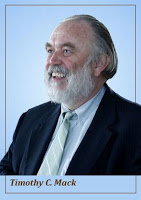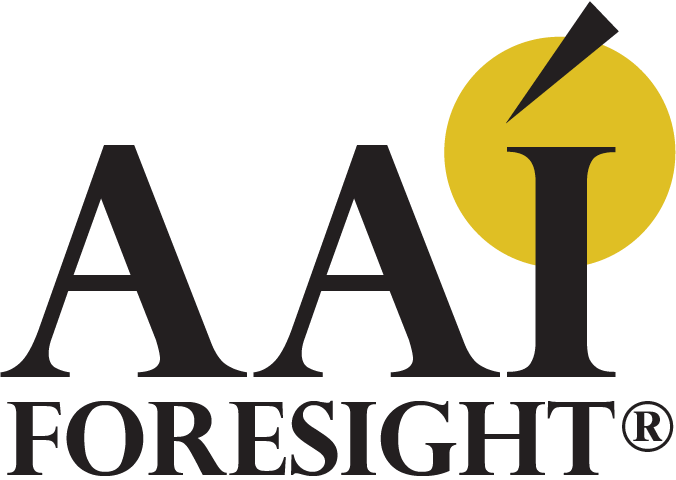A Message from Your Editor
With this issue of Foresight Signals, we are testing a slightly different approach for the stories we bring you twice a month.
Since launching in November 2014, Foresight Signals has offered you a mix of subject matter in each issue: research reports on general trends, news about members and activities of the foresight community, summaries from the AAI Blog and Foresight Reports, and dispatches from Tim Mack on his activities for the AAI Foresight consultancy.
We plan to continue sending the newsletter out twice a month (and it’s still free!), but we will alternate the content so that the first-of-the-month issue will focus on more future-oriented reports (trend signals), and the mid-month newsletter will focus on the foresight community (that’s you!).
Your feedback is always welcome! Send your thoughts, “signals” (story ideas), and news to me at CynthiaGWagner@gmail.com. —Cindy
Conference: Wicked Problems Tackled
Last week’s World Conference of Futures Research 2015 (June 11-12) tackled “wicked problems” in Turku, Finland. Among the futurists participating on the program were Peter Bishop (Teach the Future), Cornelia Daheim (Future Impacts Consulting), Jerome C. Glenn (The Millennium Project), Tom Lombardo (Center for Future Consciousness), and Wendy L. Schultz (Infinite Futures).
Those of us unable to attend could catch a few highlights on Twitter:

- Record broken at workshop I ran with Hazel Salminen at #futuresconference2015 today: 7 Mins until groups were enacting scenarios! Thank you! (@CorneliaDaheim)
- What a great session by Otso Kautto & co: The Ritual Museum, this connects to the future! Thank You 4 great adventures at #futuresconference2015 (@KPetajajarvi)
- Just got back from a mindblowing #CLA workshop with Sohail Inayatullah at #futuresconference2015 @assoPROSPECTIVE (@YvesPolCABON)
- “Give a man a fish and he will eat for one day. Teach a man how to fish and he will deplete the ocean” —Ugo Bardi, University of Firenze (quoted by Linda Hofman @FoodJuf)
Details Presentations and reports from the conference will be posted as soon as possible at the official conference page. Catch up via Twitter at #futuresconference2015. Images via Twitter, @mdufva and @AFcrew
Signals futures research, methodology
New Book: Communities of the Future
Bringing the future from the abstract to the personal, Stephen and Joanne Aguilar-Millan have deployed their foresight expertise to examine prospects for five communities in rural Suffolk County, England, in the year 2030.
 Communities of the Future: Tales From Suffolk In 2030 ($13.49; published June 1, 2015) probes the specific challenges that each of these communities faces and outlines distinct scenarios—one positive and one negative—that hopefully may inspire families, neighbors, and community leaders to chart a preferred course.
Communities of the Future: Tales From Suffolk In 2030 ($13.49; published June 1, 2015) probes the specific challenges that each of these communities faces and outlines distinct scenarios—one positive and one negative—that hopefully may inspire families, neighbors, and community leaders to chart a preferred course.
Stephen is director of research for the European Futures Observatory, and Joanne is a science-fiction writer and children’s novelist.
Details Createspace, Communities of the Future
Signals alternative scenarios, communities, rural life
Retrofutures: The WELL and @heaven
Social networking began on the Internet before there was a standard name for either phenomenon. Today, online message boards and chat rooms still exist in the age of Twitter and Facebook, thanks to a paradigm pioneered by Silicon Valley’s WELL (“Whole Earth ’Lectronic Link”").
In 1994, Stanford futurist Tom Mandel changed everything when his “Local Bug Report” thread on the WELL transformed from a general discussion on a current public-health issue to a publicly shared personal journey through illness to his gradual death from lung cancer. In a new book titled @heaven: The Online Death of a Cybernetic Futurist, early WELL denizen Kim Hastreiter, editor in chief of online magazine Paper, presents the months-long transcript of Mandel’s bug reports.
Hastreiter recalls the last post of that thread in her interview for Paper: “It said something like, ‘Tom passed away this morning. Nana was at his side and music was playing. This topic is now frozen. And if you want to get in touch with Tom you can reach him at Mandel@heaven.org.’”
Read: “New Book @heaven Explores the Internet’s Earliest Social Network and the Incredible Story That Unfolded Within It,” Paper (May 25, 2015). Order @heaven at orbooks.com.
Signals cybernetic culture, Internet history, networks
In the News: Mercedes Futurist Eric Larsen
Like many carmakers, Mercedes is pursuing driverless vehicles and has already tested driverless trucks on the Autobahn, reports Eric Larsen, head of research in society and technology for Mercedes-Benz, in an interview for the New York Times technology blog Bits. But Americans won’t give up their cars, he predicts.
In the U.S. market, family values are still very important among Mercedes’ affluent customers, Larsen says. Millennials with the means and desire to own big homes will need to drive farther for all the amenities they’ll demand for their kids.
“The solution is … privately shared vehicles,” Larsen says. “We have a business called Boost, where minivans drive children after school. They are like school buses, but door to door, and parents can track them with a phone app. They have a concierge as well as a driver, because the driver can’t leave the bus and walk the kid right to the door. A 7-year-old needs that. In this case, we’re selling a mobility service rather than a product.”
Read: “A Futurist Looks at Where Cars Are Going” by Quentin Hardy, Bits (June 10, 2015).
Signals automobiles, families, suburbs, transportation
Mack Report: Preparing Educators to Prepare Students
In a special issue on the future of work in the Career Planning and Adult Development Journal, AAI Foresight managing principal Timothy C. Mack offers an overview of five drivers of change for which future educators must prepare learners (tomorrow’s citizens, consumers, and workforces):
- information technologies so ubiquitous that information becomes a wall of white noise;
- environmental change, including compromised quality and supply of resources such as water;
- lack of innovation toward workable solutions to complex problems;
- the rise of machine intelligence that could introduce greater complexity to human problem solving; and
diminishing resources for solving problems, even when we can envision solutions that would work.
 Of the various foresight tools available, the study of weak signals is one that Mack particularly recommends for educators. Weak signals are essentially early clues to new forces of change, often discovered outside of your principal field of study, and may indicate either potential threats or opportunities. Finding them involves expanding your network of sources for ideas, including listening to naysayers.
Of the various foresight tools available, the study of weak signals is one that Mack particularly recommends for educators. Weak signals are essentially early clues to new forces of change, often discovered outside of your principal field of study, and may indicate either potential threats or opportunities. Finding them involves expanding your network of sources for ideas, including listening to naysayers.
Other futurists contributing to the issue, guest-edited by Helen Harkness (Career Design Associates), include Andy Hines (University of Houston, Graduate Program in Foresight), Gary Marx (Center for Public Outreach), Aubrey de Grey (SENS Foundation), and Edward Gordon (Imperial Consulting), and Deborah Westphal (Toffler Associates).
Reference: “Challenges Facing Education, Training and Career Development in the Future,” Timothy C. Mack, Career Planning and Adult Development Journal (Summer 2015), Career Planning & Adult Development Network, www.careernetwork.org, published by Richard Knowdell.
Signals education, futures methodology, learning

